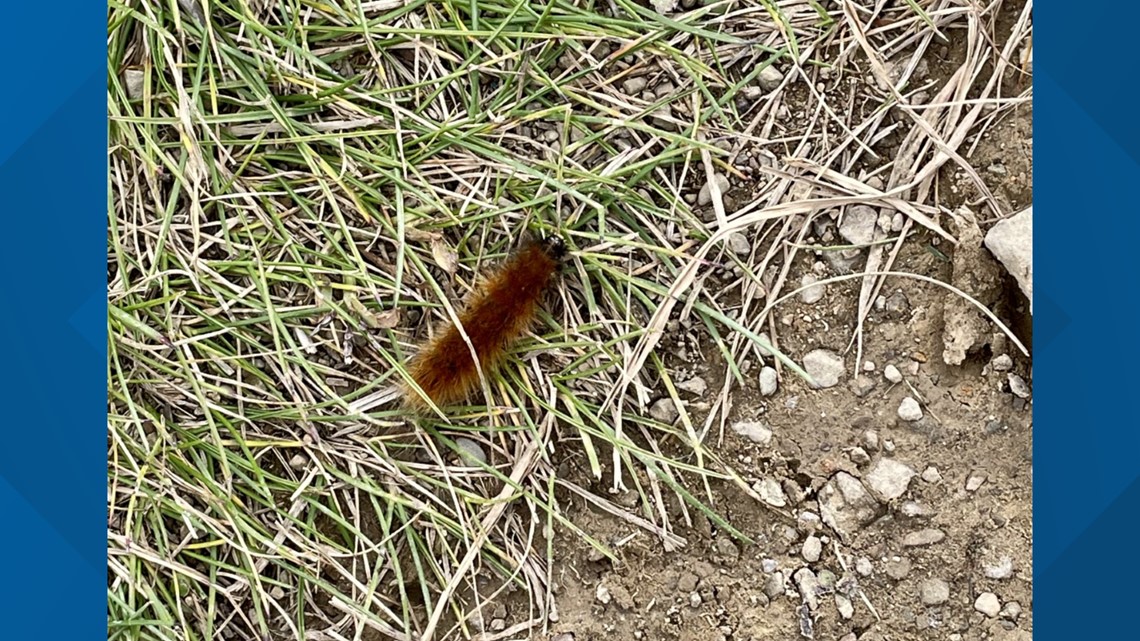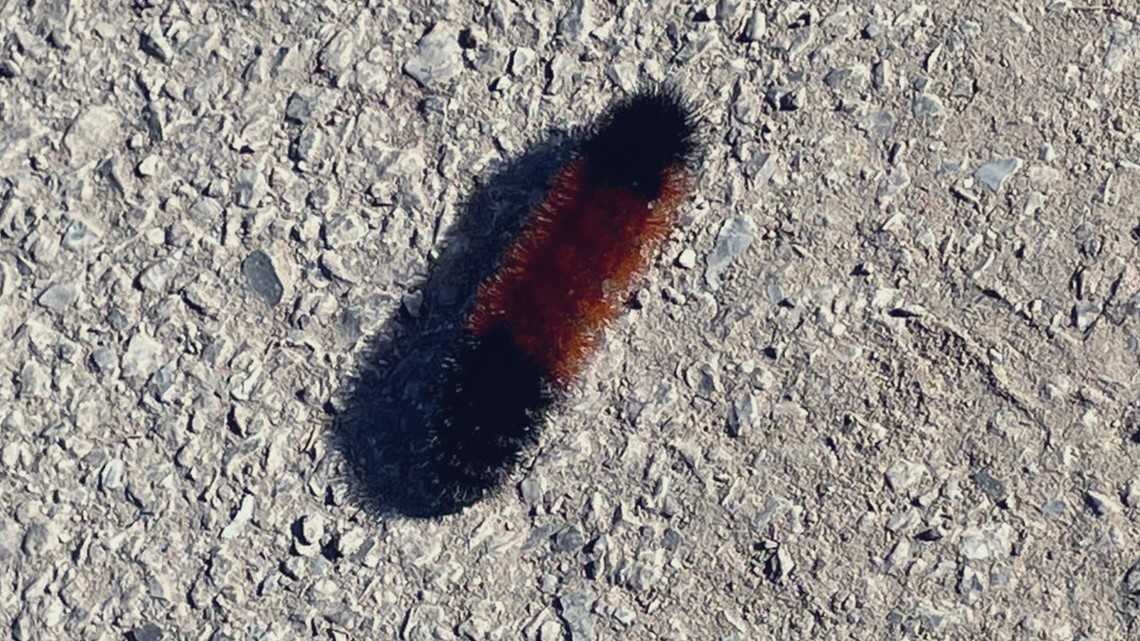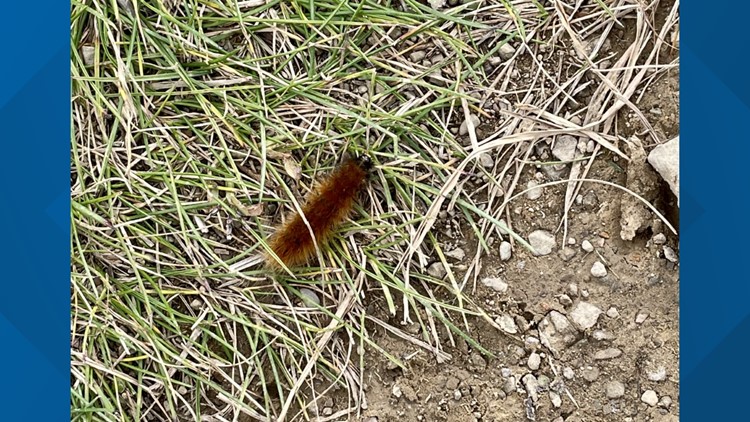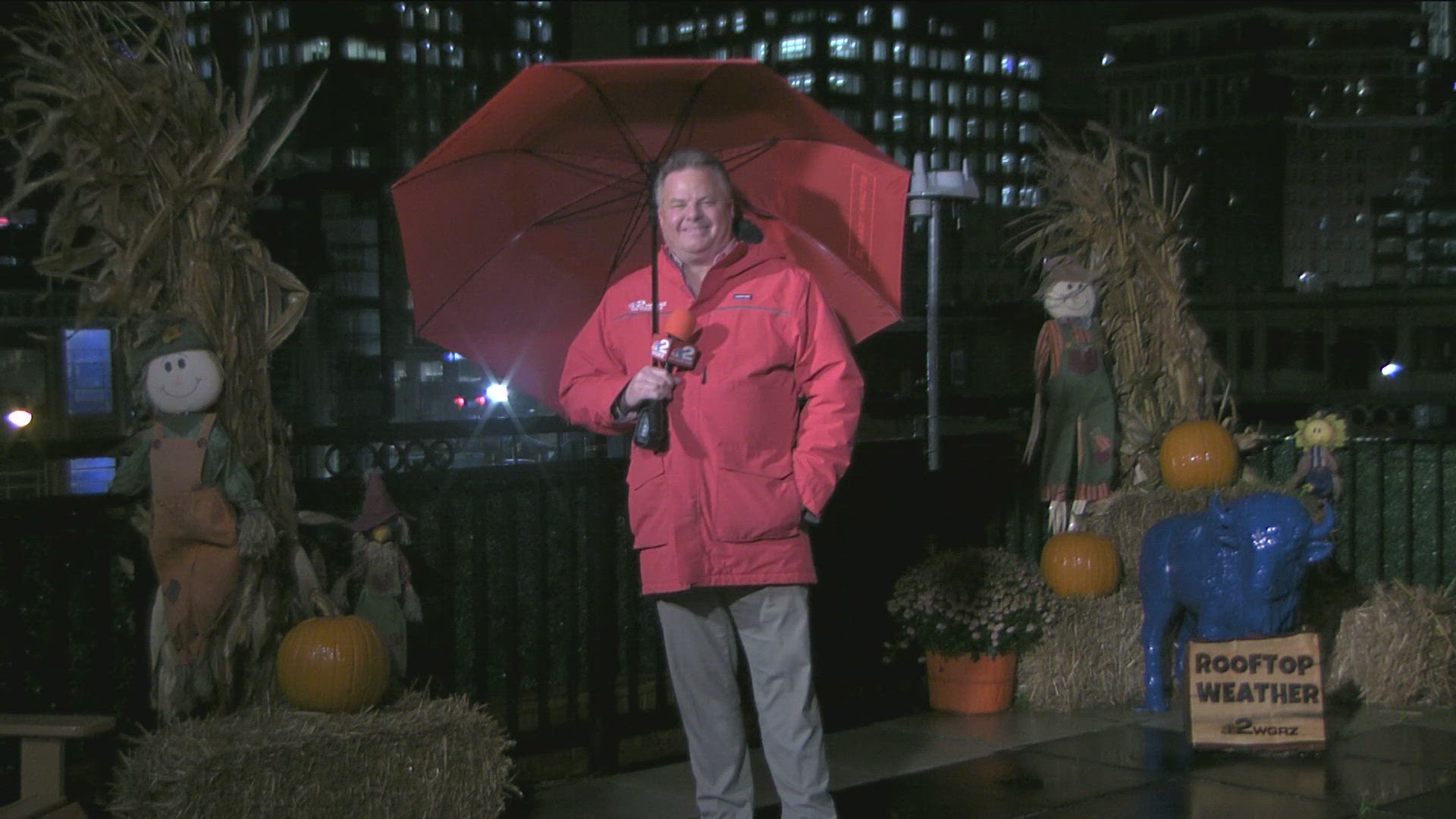BUFFALO, N.Y. — Over the weekend Storm Team 2 Meteorologist Elyse Smith spotted a Woolly Bear Caterpillar while walking along Spruce Lake at Holiday Valley, and here's what its prediction is for this winter.
These seasonal little creatures, commonly referred to as "woolly worms," are sighted in mid-October as it's around this time of year these caterpillars leave their home plants, which they feasted from all summer, to find a spot to ride out the winter. So that's why weather folklore has long included the Woolly Bear Caterpillar (Pyrrharctia Isabella) and its distinct coloration as an early wintertime predictor.
According to weather folklore, the more black on a woolly worm in the fall means a longer, colder, and possibly snowier winter to come. If there is more brown, that's a sign of a mild winter.
Here is the photo of the caterpillar Storm Team 2 Meteorologist Elyse Smith came across... the caterpillar had a few black bands near its head and the rest of it was brown. This would signify a cold and snowy start to winter in December with the rest of the season taking on a mild trend.


*Note: There is no scientific evidence that proves these little creatures can actually or accurately predict wintertime weather.
A Woolly Bear Caterpillar's coloration, and how it takes shape, has nothing to do with the weather. For one, they can have different colored patterns on their coats based on their age and diet. So there's not even a cohesive "prediction" among the species.
For the species found in the Northeast, their coloring is primarily based on how long the caterpillar has been feeding and its age. Generally, the more mature and well-fed caterpillar will have more brown in its coat. Plus, each caterpillar found within one region will look completely different than one found in another region.


Second, take last year's example (as seen above). Based on this caterpillar's coat, last winter should have been cold and snowy for the first five weeks, followed by six weeks of mild weather, then two weeks of cold at the tail end. Last December ended up being the second warmest on record for the month in Buffalo, followed by a January that was the seventh snowiest on record for the month too. In other words, the exact opposite of the caterpillar's coat.
Still, it's a fun, seasonal tradition for these little creatures to appear this time of year and a sign that winter is indeed coming.
So can the Woolly Bear Caterpillar accurately predict a whole winter season? No. But, the legend and folklore will continue to live on as an annual fall event!


